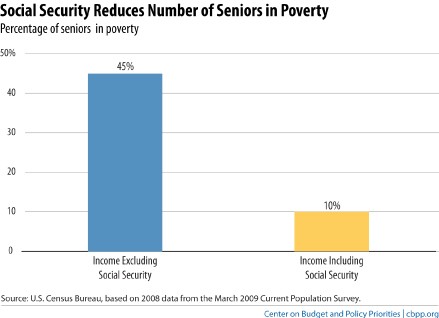5 Facts about Social Security
Post on: 29 Июль, 2015 No Comment

As negotiations continue between Congress and the White House on resolving the fiscal impasse that has shut down large swaths of the federal government and threatens a default on U.S. government debt, some are hoping for an eventual grand bargain that would also overhaul the tax code and reform so-called entitlement programs such as Social Security and Medicare.
As far as Social Security is concerned, convincing the public to accept or even consider significant cuts could be difficult. Social Security remains one of the most popular federal programs: In a Pew Research Center survey from February. in fact, 41% of Americans said spending on Social Security should be increased, with just 10% saying it should be cut. While Republicans are more likely than Democrats to support cutting Social Security, thats still a decidedly minority position: 35% of Republicans said Social Security funding should be increased, compared with 17% saying it should be decreased.
Despite its popularity, theres often considerable confusion on just how Social Security works. After our recent Fact Tank post 5 facts about the national debt , several readers asked for a similar primer on Social Security. Who are we to say no?
1 Social Security touches more people than just about any other federal program. As of the end of 2012, some 57 million Americans were receiving retirement, disability or survivors benefits from the system, at a cost of about $786 billion; 161 million people paid payroll taxes into the system.
2 At its root Social Security is, and always has been, an inter-generational transfer of wealth. The taxes paid by todays workers and their employers dont go into a dedicated individual account, nor do Social Security checks represent a return on invested capital. (Although you might be forgiven for thinking so, since the personalized Social Security statements that used to be mailed out once a year and now are available online detail your payment history and projected monthly benefits.) Rather, the benefits received by todays retirees are funded by the taxes paid by todays workers; when those workers retire, their benefits will be paid for by the next generation of workers taxes (caveat: see Point 3). Your benefit amount is based on your earnings history and age at retirement. not on how much you and your employer paid in Social Security taxes (although taxes paid are, for most people, closely tied to their earnings.)
3 For much of its history, Social Security was a strictly pay-as-you-go system, with current tax receipts funding current benefits. That changed in 1983, when Congress (as part of a comprehensive overhaul of the program) raised the payroll taxes that provide the bulk of Social Securitys revenue, to build up a cushion for the coming onslaught of Baby-Boomer retirees. For nearly three decades, the system took in far more revenue than it paid out in benefits; the surplus was invested in special non-tradable Treasury bonds, with interest credited to the systems two trust funds (one for old-age and survivors benefits, the other for disability payments). As of Sept. 30, the trust funds together held more than $2.8 trillion in Treasuries. (Some people characterize that as the government borrowing from or raiding Social Security, but the system is in essentially the same position as any other investor who buys Treasuries.)
4 However, since 2010 Social Securitys cash expenses have exceeded its cash receipts ; negative cash flow last year was about $55 billion, according to the latest report from the systems trustees. While credited interest is still more than enough to cover the deficit, that will only be true until 2020. After that, Social Security will begin redeeming its hoard of Treasuries for cash to continue paying benefits as was the plan all along.
5 Social Securitys reserves will be fully depleted by 2033. according to the trustees report. (The Congressional Budget Office, in a separate report that uses somewhat different demographic assumptions, puts the date at 2031.) After that, while the system will still be receiving tax revenue, it will only be enough to pay about three-quarters of scheduled benefits unless Congress changes the benefit formulas, raises the payroll tax, or makes other changes such as raising the cap on taxable wage income (currently $113,700).














